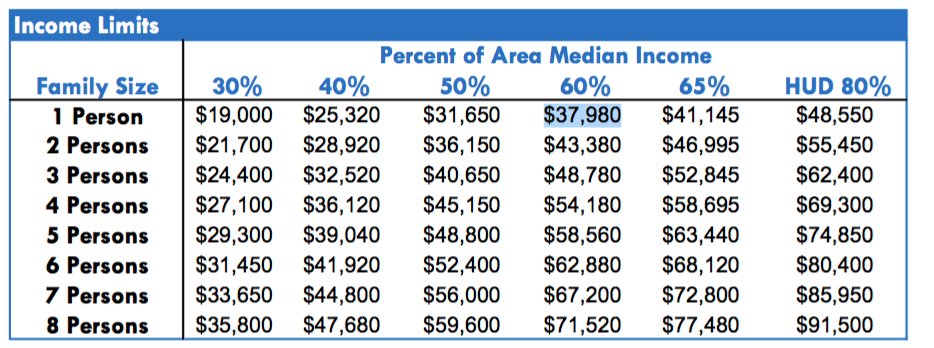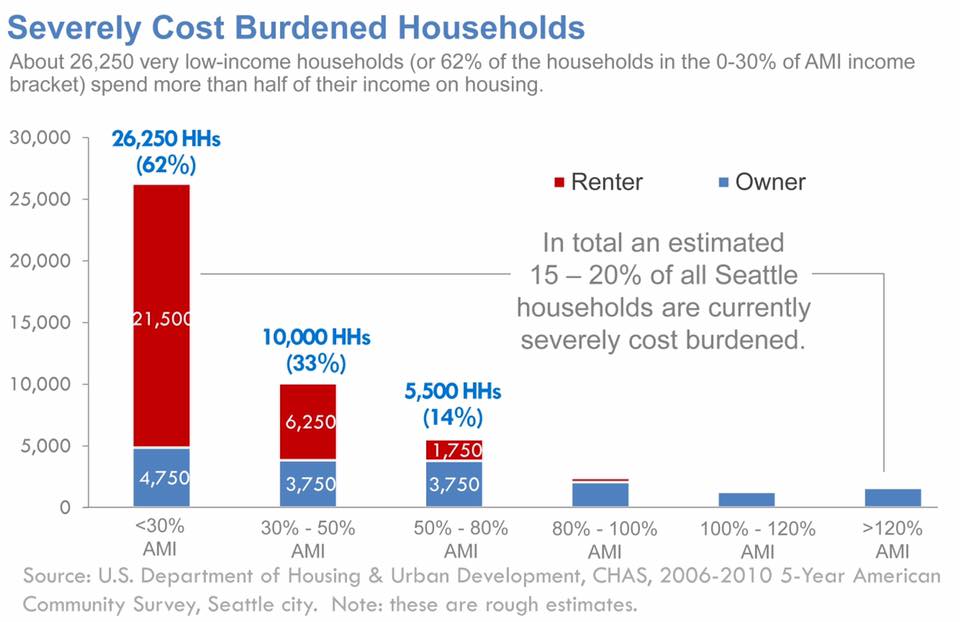What if Paul Allen Just Paid Your Rent?
You may have heard that billionaire Paul Allen is donating $30 million dollars to house homeless families. A report from Q13 said the contribution
Will help cover design and construction costs for Mercy Housing Northwest, a local nonprofit that will operate the facility . . . The location and size of the project has yet to be determined.
It is surprising that there isn’t a location or project designed. But let’s take a look at a project that Mercy Housing has done in Seattle, the Othello Plaza Project. The project had a total cost of $36.7 million for 108 units of housing, or about $340,000 per unit. So Allen’s money would buy, if the price was about the same, about 88 units. A project that size would have about $530,000 in annual operating costs (that’s about $6,000 per year, per unit).
Now for the 88 households that end up, someday, getting those units all of this expense is beneficial. But how long will it take for Mercy housing to find land, buy it, do predevelopment and design work, and actually build a project? And we’re assuming costs won’t change between now and then for labor, materials, and other costs associated with a housing project.
Consider if Allen used the $30 million right now, today to help so called, “cost burdened” households in Seattle, people that are paying 50 percent of their gross monthly income on housing. Take a look at these two charts.
First, the City’s most recent standard for what households should be paying for housing.
And here is the City’s data on cost burdened households.
I’m no fan of the arbitrary affordability standard that sets affordable rent at 30 percent of gross monthly income. But let’s just work with that standard and the $30 million from Allen. If Allen decided to address the smallest portion of the cost burden problem in Seattle, here’s what he could get in return.
Allen could end the housing problem as it is measured by the City for 1,750 households for two years and still have some money left over. It would cost some money to set up a few staff to screen applicants, manage the disbursements, and track people’s income over time, but the program could get going in weeks. There wouldn’t be any complicated transactions for land and financing and construction. Just a simple transfer of $633 a month into 1,750 bank accounts. I’m basing the transfer on 60 percent of Area Median Income (AMI), so some households between 50 and 80 percent of AMI might need less or more than $633, but the point is clear.
Is this exactly the best use of Allen’s money? Maybe not. Maybe the funds should be transferred to households who earn less. The funds might not solve the whole problem for people with less money struggling with rent expenses but it would still help solve the problem for many. But the difference between a direct transfer program and building units is clear: transferring funds is immediate and solves the basic problem of affordability, not having enough money to pay rent. The advantages of building units is that they last a long time, much longer than the two years that this transfer program would last. But those units also cost money to manage, in this case somewhere around half a million per year and it takes a long time to build them.
My point is not to eliminate entirely programs and organizations that build subsidized housing. We need lots of housing for people who simply don’t have the resources to pay rent in Seattle and end up spending lots of their income just on a place to live. But not all of that needs to be expensive units. The households struggling to make their rent payments are already living in Seattle. Direct transfer payments help right away and when combined with programs like Multifamily Tax Exemption by taking advantage of existing and new housing construction to help households in need. The idea of direct payments needs more analysis and research, but I hope that the Mayoral candidates will discuss it this year, and it’s something I hope the City will explore in the years ahead.





